#Smart Mobility
Text

Smart Mobility: Reworlding 001b by Kai (Kari) Altmann, 2024
3 notes
·
View notes
Text
AUTO. BENE CONFRONTO URSO - STELLANTIS
“Al di là delle strumentali dichiarazioni di qualche rappresentante sindacale, è un fatto molto positivo il confronto che il ministro Urso sta portando avanti con Stellantis. L’obiettivo è quello di insediare un tavolo di sistema, con i sindacati, le aziende, l’indotto e le otto Regioni interessate, per giungere finalmente alla realizzazione di un piano di sviluppo del settore automobilistico in Italia. È interesse di tutte le parti in causa invertire la tendenza e aumentare, con lo stabilimento di Melfi protagonista anche rispetto al quinto modello, la produzione di automobili in Italia”.

#automotive#stellantis#sviluppo#melfi#ministro adolfo urso#fdi#automobile#auto elettrica#smart mobility
0 notes
Photo

Funding grants to power up three African e-mobility projects
The LEAP Fund has selected three African and four Latin American e-mobility projects to which it will provide $1.05 million in funding grants.
https://www.esi-africa.com/news/funding-grants-to-power-up-three-african-e-mobility-projects/?utm_source=rss&utm_medium=rss&utm_campaign=funding-grants-to-power-up-three-african-e-mobility-projects
#East Africa#News#Smart Mobility#Southern Africa#Africa#e-mobility#electric vehicle#funding#South Africa#Zambia#ESI Africa#ESI-Africa.com
0 notes
Text
https://eveium.in/
Under the umbrella of the ‘Make in India’ campaign, we have established our entire manufacturing, production and distribution in the country using cutting edge technology to produce unparalleled quality products. We aim to surpass if not equal the same speed, endurance, mileage of fuel-based vehicles.
#electric vehicles#electric scooter#ev industry india#ev industry#ev scooter#e scooter#sustainableliving#sustainability#future of commute#smart mobility
0 notes
Text
Under the umbrella of the ‘Make in India’ campaign, we have established our entire manufacturing, production and distribution in the country using cutting edge technology to produce unparalleled quality products. We aim to surpass if not equal the same speed, endurance, mileage of fuel-based vehicles.
0 notes
Text
Congres Barcelona - Day 3
The final day of the Tomorrow.Mobility Congres was significantly more quiet than the other days. Next to that there were an awful lot of people wandering around with wheeled trolley suitcases.
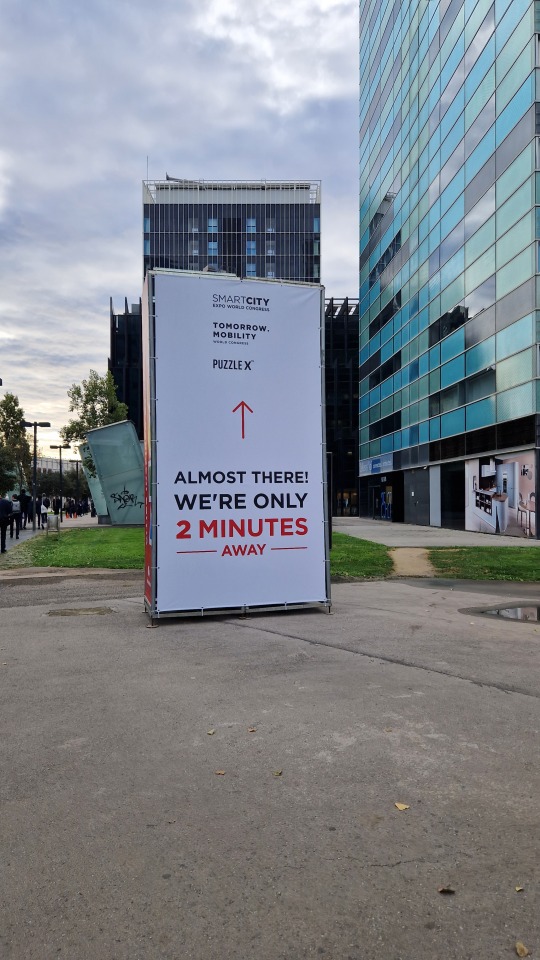
Because I had an early evening flight back to Amsterdam I decided to only go to three lectures on this final day. I therefor had to miss the lecture on Micro-mobility and Road Safety which was scheduled late in the afternoon.
Up In The Air - Is Urban Air Mobility What Cities and Citizens Want?
The first session was quite an important one. It is a topic most cities and municipalities are not heavily engaged with, but of which we know one day it will challenge us. It's about Urban Air Mobility (UAM) which is the container concept for 'drones', 'air taxi's', etc.

There were two speakers from private sector companies, one speaker from the public sector and one speaker from an interest group (the EU Against Aircraft Nuisance).
The private sector speakers were primarily focused on the benefits of UAM to our daily lives. The technology is basically there, it just has to be implemented. Logistics will go much faster than they do today and because the logistics will move from ground to air, it will solve a part of the congestion in urban areas. Especially in remote areas with poor infrastructure, UAM can be a problem solver. UAM is being implemented successfully in parts of Africa where they ship medicine and blood to remote areas in less than an hour which used to take 4 hours to 1 day before, thereby saving lives.

The public sector speaker was wary of the fact that one of the problems for the livability of cities is that streets (on ground level) are now overcrowded with traffic. Why would we want to overcrowd the airspace above us with traffic as well? Besides, part of the livability of a city comes with social contact. Why would you want your coffee being delivered to you by a drone? It would make the streets less social, because no one has the need anymore to go out. The speaker however did point out that in some cases drones can be beneficial. For instance when a facade needs to be checked, in the current situation you need to close off an entire road and put a crane in. In the future you could make use of drones, so you would not need to close off the street anymore.
The speaker from UECNA pointed out that the livability in cities is already under immense pressure due to a lot of different noise sources. She argued that all these UAM are quite noisy so it would only add up to another noise source in the urban areas. Besides that, what would happen at accidents? Normal aircraft occasionally get involved in accidents as well. Therefor nearly all airports are built outside the urban areas. How does UAM - which are basically smaller sized aircraft - fit in these dense urban areas?

The panel concluded that UAM will be inevitable as regulators are usually too slow to react because they lack understanding of the subject. There are some useful applications of UAM as well, even in dense urban areas. But there are a lot of question marks still 'hovering around' (pun intended) the subject. Therefor it would be wise if European local councils would invest in the knowledge of the subject and have an expert in their organisations who can serve as a first point of contact to the industry as well.
The Energy Crisis - A Chance For Change?
The second session was a high level round table discussion between the Secretary General of POLIS (European mobility network for local governments), a policy analist of the OECD, the deputy mayor of Tel Aviv Yafo and the Senior Director Strategy at UITP (the international advocacy organisation for public transport), with a board member of Dynniq as moderator.

There debate was centered around the question in what way the present energy crisis is an actual chance to change the mobility behaviour?
The panel suggested that actually the COVID pandemic had much more impact on the mindset of people, because their daily pattern changed (dramatically) and therefor they were confronted with other possibilities of travel and having their needs changed.
For the public transport sector the energy crisis will actually be harmful on the short term as in the most populated cities with tram- and metro networks, the public transport companies consume about 30% of all the power in those cites. The rising costs of the daily operation - together with the broad wish of keeping public transport affordable to all - gives public transport companies a hard time. However, in the long term, if there is the political will, public transport could benefit, but only if public transport will be at the heart of future mobility. A 15-minute city can only work if everyone has a PT-stop within walking distance, with direct routes towards it and good step-free facilities.

The only way - the panel argued - in which the energy crisis can be a chance for change is when politicians would dare to say no to the car. As long as the car is being facilitated, all other modes of transport will lose out, because they either cost more effort or they don't come close enough to the origin or destination. For trips outside of the city a car can be fine, but as long as the car is within the mindset, the car will always win. An example of this - what they called 'short-term political thinking' - was when governments temporarily lowered or abolished the excise duty on petrol and diesel to 'help people out with their daily costs'. The panel argued that this was a narrow view from only the economics perspective, whilst this was the biggest chance to get people into public transport, on bicycles and on shared mobility.
The panel concluded that any politician who decides to have mobility in their portfolio should not be afraid to make tough choices, going against the grain and dare to say 'no' to the car in dense urban areas.
Micro-incentives: a Game-changing Approach to Nudging Sustainable Mobility
The final session I attended was about micro-incentives or micro-subsidies. This was a small scale pitch at the Innovation Plaza.
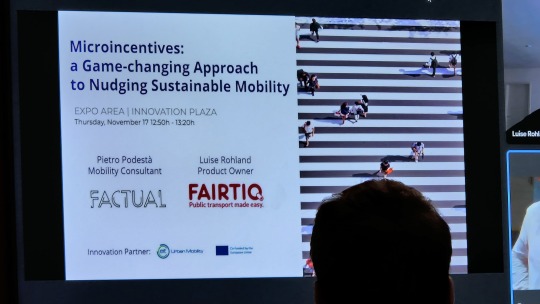
In this short pitch the argument went that the way public transport is run around the world means that it is subsidising everyone. Even those who can afford to pay and need to use it anyways. The keyword here was price-elasticity (my background in business economics suddenly came quite handy here).
A daily commuter or someone on a business trip will often use public transport and get paid for it, either by a business card or by a travel allowance. For these people, the price of public transport doesn't really matter. So if you would make public transport free or create a general lower-priced ticket like the German €9-ticket you wouldn't change mobility behaviour and all you really do is missing out on income. Because those who have a lower price elasticity, will travel anyways with public transport. The German ticket actually showed that most users who bought the ticket were already using public transport during the week and in the weekend it only caused more mobility by people who would otherwise not have made those journeys in the first place. It hardly replaced any car journeys.
Basically, they argued, if you want to get people into public transport you have to specifically target them. The most common known examples of these incentives are age-dependent offerings and off peak travel discounts. However, the COVID pandemic has already shifted the peaks to be spread out more. So off peak discounts are not that effective anymore.
To use micro-incentives it means you have to get the understanding of their behavioural choices. Which brings in the field of Behaviour Economics. Someone who is a commuter during the week has a lower price elasticity than when that same person is going on a leisure trip in the weekends. Therefor that same person has a different behavioural approach based on their travel motive and that is where you can make a difference in specifically targeting them. Another example is with people who occasionally use public transport. If someone has used public transport, but hasn't used the system for an undisclosed amount of days, you could sent that person a push notification or email in which you offer a discount for the next week if that person uses public transport again. It is a tactic which is broadly used in the world of shared mobility, but somehow the public transport world seems to be too conservative in this and is still stuck in the narrative of the necessity to serve all and target all.
Wrap up

These three days in Barcelona were very informative, interesting and gave plentiful new insights into the daily dilemmas we face in the mobility industry.
I really need to thank my employer (Municipality of Haarlemmermeer) for offering me this chance as this is not something we do too often (especially these congresses abroad).
By writing about what I have seen and heard during these three days, I hope I can inspire colleagues in the same way as I have been inspired during these three days.
There might not a solution to everything, but if you don't take the first step, there wont be any further steps to take how small or big they may be.
Adam Zuyderwijk BBE
Mobility Policy Advisor
Municipality of Haarlemmermeer (NL)
Some other pictures of the day:

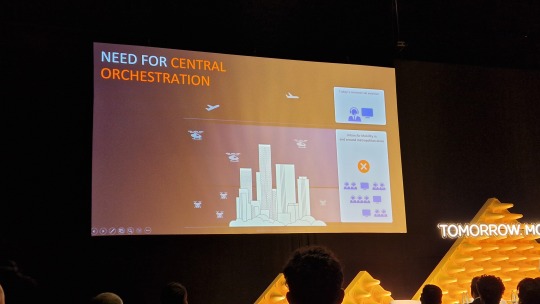
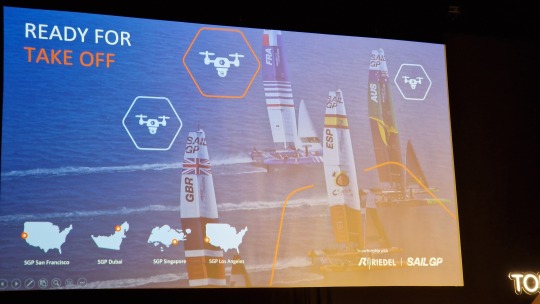
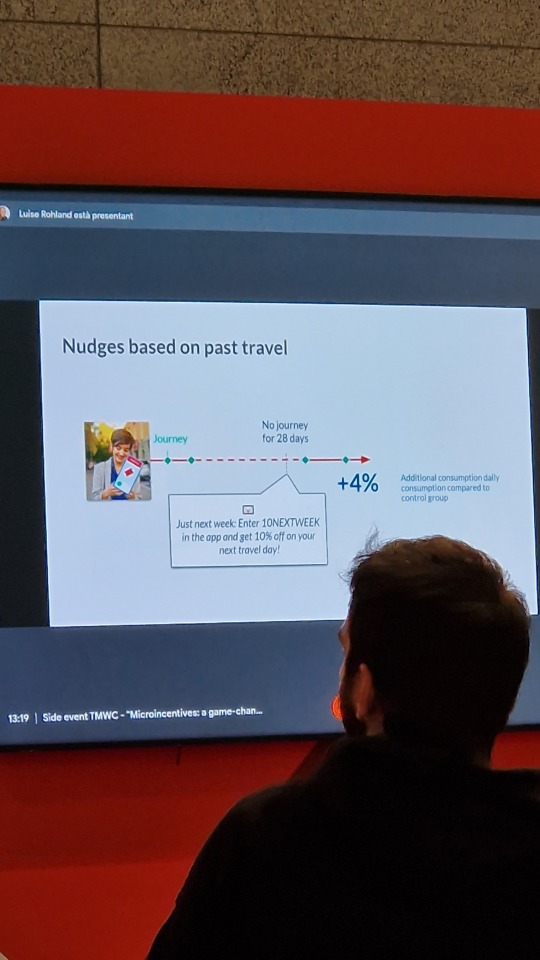

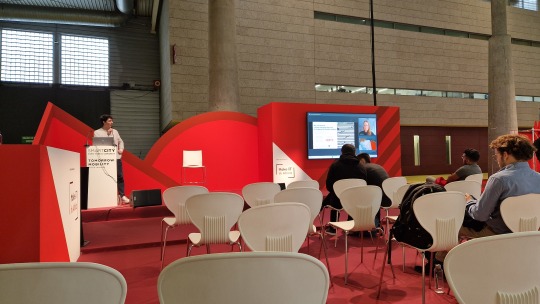


0 notes
Text
Smart Mobility Market 2022 Size, Share, Upcoming Industry Trends, Business Development Analysis, Segmentation and Forecast by 2028
Smart Mobility Market 2022 Size, Share, Upcoming Industry Trends, Business Development Analysis, Segmentation and Forecast by 2028
This report studies the Smart Mobility Market with many aspects of the industry like the market size, market status, market trends and forecast, the report also provides brief information of the competitors and the specific growth opportunities with key market drivers. Find the complete Smart Mobility Market analysis segmented by companies, region, type and applications in the report.
The report…
View On WordPress
#Covid-19 Impact Analysis#Smart Mobility#Smart Mobility forecast#Smart Mobility Industry#Smart Mobility Market#Smart Mobility price#Smart Mobility report#Smart Mobility research#Smart Mobility share#Smart Mobility trends
0 notes
Text
How Multimodal Transportation is Changing the Future of Urban Mobility

Today, consumers are increasingly replacing the concept of my vehicle with the concept of a vehicle that comes to me when I want it.
A plethora of options is making multimodality in transportation a daily reality for many. For example, a shopper might pick up an e-scooter waiting on a street corner to drive to a shopping destination, drop it off at the entrance, and then hop on a bus to return home.
This new ecosystem of multimodal transportation is helping people easily get from point A to point B, especially in urban, high-density areas ― unencumbered by the responsibility of vehicle ownership or operation.
Riding the express to success: It’s all about trust
In addition to new business models, transportation technology itself is rapidly evolving. One emerging technology that could be a game changer for multimodal transportation is the autonomous vehicle (AV). The successful integration of multiple supporting technologies will be essential to the success of autonomous vehicles as they are incorporated into various transportation systems.
Reliable data - about the vehicle, its environment and its passengers - is the backbone of a smart, connected mobility ecosystem. However, privacy, consumer safety, and security concerns still need to be addressed.
Overcoming Privacy and Security Barriers to Build Public Trust
Through 'privacy by design' technique - embedding data privacy and security directly in the ecosystem design phase rather than incorporating them as afterthoughts.
When it comes to safety, one puzzle to be solved is localization — knowing exactly where a vehicle is relative to its surroundings. Another is accurate trajectory planning; for example, how a vehicle will make a turn at an upcoming signal or intersection. Solving these two challenges will shed light on how the vehicle will maneuver in a complex, dense urban environment. From there, key technologies such as high-definition maps and remote vehicle control systems that leverage 5G can be developed to refine the interaction between the vehicle and the infrastructure.
Transforming the Industry While Building Public Trust
With decades of experience and core technologies in the automotive industry, Hitachi is deeply engaged in the development of technologies that are driving the multimodal explosion. For example, Hitachi has developed or co-developed in-vehicle weather intelligence, environmentally friendly engine management systems, and stereo cameras for improved automatic emergency braking at intersections.
Directly addressing the issue of public trust, Hitachi has developed both a next-generation smart navigation solution to enhance localization and a high-precision trajectory tracking technology to improve the safety of AVs on public roads.

Many organizations have joined the effort to mass-deploy connected technologies, including AVs, and win consumer confidence. But it’s not yet a fully coordinated effort. At Hitachi, we’ll continue to champion these types of joint efforts while developing innovative technology that can make multimodal or futuristic transportation mainstream.
By leveraging groundbreaking innovation, together we can evolve a reliable, safe and dependable system ― one that the public understands and trusts. When we do, the future of smart mobility will be wide open.
Learn how Hitachi is powering futuristic transportation
Discover how Hitachi is unlocking value for society with Sustainable Innovation in Transportation:
#multimodal transportation#driverless bus#digital technology#smart mobility#sustainable transportation#transportation innovations#autonomous vehicle safety#advanced driver assistance systems#future of mobility#Multimodal Mobility#futuristic transportation#decarbonization#sustainable transport#autonomous vehicles#AV technology#autonomous vehicle technology
0 notes
Text




pov: jamie drysdale is beaming at you as he tells you about the wine fridge his parents gifted to him for christmas
#jamie drysdale#ducks#anaheim ducks#hockey#nhl#meg.gif#meg.ducks#meg.all#i have fallen prey to his mild mannered charms he's gone into my defensemen pocket#where i keep my lovely smart offensively minded mobile defensemen
303 notes
·
View notes
Photo
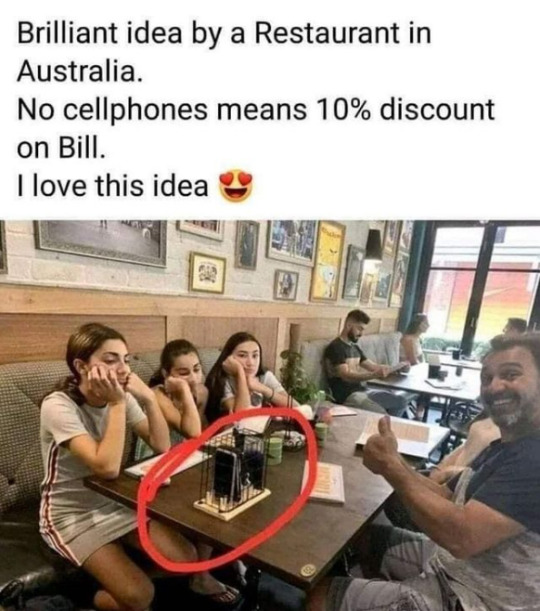
Would you lock your phone away for 10% off?
#cell phones#mobile phones#smart phones#restaurant#socializing#social experiment#conversation#australia
841 notes
·
View notes
Text
I was gonna do a shipping tier list for bg3, but I was putting way too much effort into the icons AND someone had already done it 🤦♀️
Anyway if anyone has any use for the icons I made before giving up, please go ahead and take them 💜



#bg3#astarion#halsin#wyll ravengard#gale of waterdeep#halstarion#wyllstarion#bloodweave#baldur's gate 3#baldur's gate iii#doing the icons on mobile was not smart
47 notes
·
View notes
Text
Suletta in ep18: *learns that she’s some sort of clone of her sister*
Suletta in ep19: *realizes that real love is unconditional*
Suletta now: so clearly my mother doesn’t love me and I know why--
#it's jsut#she's genuinely so smart but this is also heartbreaking.#prospera never TOLD her she doesnt see her as her real daughter but suletta knows!!!! she knows bc of the way prospera has made her feel#over the years. she knows that that was Not what a mother is supposed to feel like. thats.#its so fucked up#mobile suit gundam the witch from mercury#g witch#g witch spoilers#suletta mercury#ericht samaya#lady prospera#smokey speaks
159 notes
·
View notes
Photo

Key highlights from the 15th ITS European Congress in Lisbon
Explore the advancements and insights unveiled at the 15th ITS European Congress in Lisbon, where innovative technology, business solutions and policy discussions converged to drive the future of intelligent transportation systems and revolutionise the landscape of mobility.
https://www.intelligenttransport.com/transport-articles/148000/key-highlights-from-the-15th-its-european-congress-in-lisbon/
#modal shift#public transport#public-private partnerships#smart mobility#sustainability#sustainable urban transport#Halimah Haque#Intelligent Transport
0 notes
Text
it is really funny to me how almost everyone spent the hiatus thinking suletta and miorine’s relationship could never come back from the Suletta Splatetta Incident™ or at least not without massive amounts of angst first but then miorine’s actually just like


#god bless miorine rembran for being smart enough to immediately see right through a shady bitch 😔🙏#mobile suit gundam the witch from mercury#sulemio#miorine rembran#suletta mercury#prospera mercury#elnora samaya#witch from mercury spoilers
329 notes
·
View notes
Text
India is the largest motorcycle market globally, with 37 million vehicles on the road. Multiplying this to carbon emission produced gives us a number that is staggering to think of. Directives towards promotion of sustainable solutions have been at an all-time high with commute being one of the prime concerns.
#electric scooter#electric vehicles#future of commute#sustainability#smart mobility#evs in india#high speed ev
0 notes
Text
Congres Barcelona - Day 2
On the second day of the congress it was imminent that many visitors had a late night on Tuesday as the early sessions were quite…. unattended. I had – again – a full day ahead with subjects that were a bit closer to my actual daily reality at the Municipality of Haarlemmermeer.
Accessibility and Inclusiveness: Drivers of New Urban Mobility
We kicked off the Wednesday program with the 15-minute city. Or as Benjamin Büttner from TU München put it; the ±15 minute city. Büttner said that he thought the 15-minute concept of Carlos Moreno (who was having a lecture at the same time in the hall next to ours) was a simplification of the reality. The basics should be: ‘human-centred planning’. According to Büttner not all conveniences need to be at 15 minutes radii. At TUM they created proximity circles in which you have amenities within 5 minutes (e.g. a pocket park or public transport stop), whilst some are fine if they are within 15 minutes reach (e.g. supermarket, schools, general practitioner, gym, public meeting space), whilst others can be very happily placed at within a 30-minute range. (e.g. a specialist doctor, clothing shops, hospital, cinema/theatre and working place).

Büttner calls the 15-minute idea a ‘happy marketing tool to fool politicians into catchy wordings’ , as it doesn’t actually tell you what you need to do as an Urban Planner and what the basic needs of the city’s inhabitants are; to have the right amenity at the right proximity distance. Next to that, you can’t have all amenities within 15-minutes, because that wouldn’t be economically viable. The 15-minutes rule is quite arbitrary too; an adult walks on average 5kph, whilst an elderly walks 3kph at max. How do you calculate these 15 minutes radii then? He eventually broke it down to the following 8 principles:
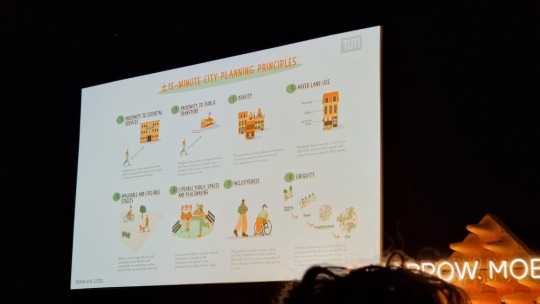
Create the right proximity for essential services
Create a better proximity to public transport than the car, with focus on the routes being barrierfree
Create the right density for the right proximity as this helps the economic viability of these services
Focus on mixed land use to be able to create these proximities
Walkable and Cyclable streets free of barriers and with a closer proximity than cars
Livable public spaces and placemaking by co-creating with the local inhabitants
Extra focus on inclusiveness as everyone has to be able to participate in this 15-minute society
Ubiquity; start small (by changing a parking spot to a allotment park) and spread it right through the city, to street-level, neighbourhood-level and city-level. Only then you’ll get the change in mindset, because people will see and feel it everywhere around them.
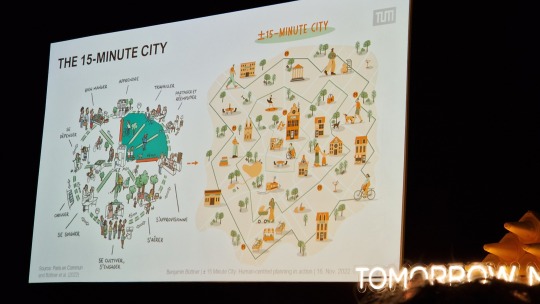
During the ensuing roundtable session the focus was on health benefits. At government level, too much focus is going into the cost of infrastructure, without calculating the (financial) health benefits these infrastructure can achieve. They also promoted the idea that we need to rethink mobility as a whole. From possession to mobility. A founder of a peer2peer car share company – in which private owners share their own car through an application platform – told the audience that a lot of the participants sold their own car and those who kept it and shared it through her platform used the extra income to be able to switch from a petrol-powered vehicle to a zero emission vehicle. Again these group of people advocated as well that smart mobility shouldn’t be about technology first, but human first and technology as an aid.
Practical Digital Innovation or Just More Tech Hype?
Speaking of technology, the next session was about practical digital innovation. All the speakers in this session warned of being to over-optimistic about technology. It is not a final solution and it will not be an answer to everything as mobility is a lot about human interaction, human behaviour and human habits.
They did tell however that in some cases it can improve the way we get knowledge about mobility and being able to use that knowledge to either steer or facilitate mobility in a better way.
Acatech showed a principle in which mobility companies in the private sector (e.g. public transport providers and shared mobility providers) can share many more information than they do now, without them losing the ownership of that data (which most of those companies fear, to an extend in which they always tend to keep these data to themselves)

Vianova showed from data from a case study in Amsterdam, that most shared e-mopeds actually created more CO²-emissions because they are used in areas that were already CO² positive or CO² neutral. This occurred at places where people switched from bicycle and walking to these e-mopeds. With the use of data the providers could now actively steer demand of these e-mopeds into the parts of Amsterdam where they are really able to make a difference CO²-wise.

Finally the speaker from Deloitte advocated that
DIGITAL PLATFORMS and solutions ENABLES smart connected services
REGULATION (e.g. like road pricing) ENCOURAGE the smart mobility
CAPITAL MARKET is eager to invest in VIABLE BUSINESS MODELS given the expected demand
The latter for instance is one of the reasons why share mopeds and share bicycles are on a downfall in the Netherlands.
Park & Ride: Facilitating City Councils to Create Multimodality Hubs
In this short side event the AMB (Àrea Metropolitana de Barcelona) gave a quick insight in how they have enabled multimodal hubs in the Barcelona Metropolitan Area.
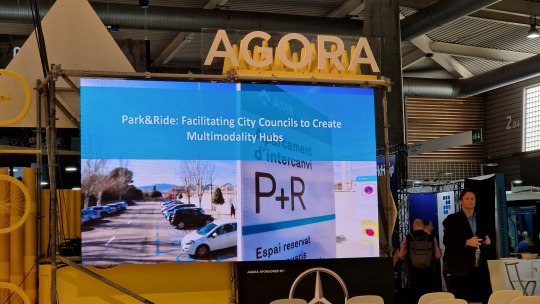
In short, to be able to ‘lure’ car users into these P+R spots you have to make sure that they have certain benefits, for example;
Make it convenient by having dedicated parking spaces for PT-users
Make it convenient by having one mobile platform for ticketing of both parking and public transport
Make it competitive compared to driving into the inner city by offering attractive discounts or free parking for PT-uses
By making it a digital and real-time system the parking wards can check easily whether someone is parking rightly in a designated PT-parking spot. Because the region of Catalunya only switched over to smart cards in public transport as of January 2022, the speaker could not tell yet how much more car users are switching over. For now their main objective was to focus on traffic from the outskirts of the metropolitan area into the city of Barcelona and in places where there is lower density and therefor higher car usage.
Perfect Storm: Public Transport to the Rescue
The final lecture of the day was about the question whether public transport could be a solution to future mobility.
It started off with solution talks from three perspectives;
More integrated public transport
In this speech Renfe gave insight into a new app they’ve been developing as the leading train operator of Spain. In this app all kinds of mobility solutions can be found, booked and paid for without the need to have multiple apps of payment options. This should make door-to-door travel throughout Spain much more attractive and convenient
More sustainable public transport
In this speech Moventia – a company that offers both public as well as private transport – highlighted a case study from Pamplona in which they use biomethane as a fuel for PT-buses. Because biomethane is created out of either municipal waste (the stuff we throw away every day) or out of livestock manure (so we need more, not less agricultural farmers in NL!) it is much more carbon-neutral as it compensates carbon dioxide that would be produced anyways and captures it to create a biofuel. They’ve been piloting it since they saw a case study in Sweden in 2014 and are now going to fully integrate it into the bus services of Pamplona.
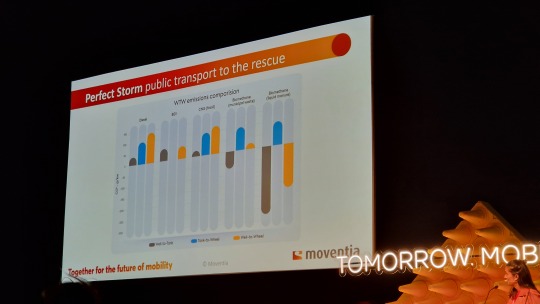
More flexible public transport
One of the ongoing discussion in our country – and in Haarlemmermeer as well – is that of fine-grained public transport (fijnmazigheid in Dutch). Ne-mi has created analytics software for public transport in which popular demands can be tracked and made visible. By doing so, the software can provide answers to where bus lines should run, where they should go to and where bus stops should be to catch the most customers. According to Ne-mi the biggest problem of public transport is that it usually has a fixed route, with fixed bus stops and fixed schedules. Therefor users have to adapt to the system instead of the system adapting to the demands of the users. Because of this, the car, bicycle and shared bikes/scooters/mopeds will always have an advantage against these fixed PT-systems. By providing these insights they have been able to change 3 fixed bus lines in Barcelona into 2 flexible bus lines with 100 different stops in total. Routes and stops are decided by demand and are constantly adaptable creating more traffic into these two bus lines than the three former lines ever had.
The session – and the day – closed with a roundtable talk with government representatives from India, Rosario (Argentina), Eindhoven, public transport representatives (Keolis and UTIP) and research institutions (PAVE). In this roundtable the question was raised if and how public transport can be a solution for the “perfect storm”.
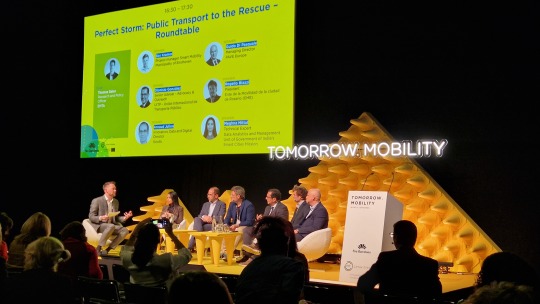
The general view is that public transport is often treated less than cars. For instance urban planners are more keen on creating parking spots and parking hubs nearby homes than dedicated bus infrastructure through their plannings. Often there is a lack of willingness by (local) politicians as well; they find it difficult to say no to the motorists and are happily making bus routes taking the long way round. In their view, public transport should be at the heart of the mobility transition. The backbone of the urban area to which walking, cycling, shared mobility – and car usage as well – should be hung up to. Only by doing this, you can create multimodal journeys and get the desired modal shifts necessary to keep cities livable and healthy in the future.
It does need ambition, difficult choices and above all a change in mindset of the people taking part in the mobility system every single day. They need to be more aware of changing habits, making healthier (mobility) choices and understanding the need to be part of an urban system.
On the planning and governance side of view, there has to be more long term planning. Dare to look further than the 4 to 5 year political cycle as local government, invest more in not only PT-infrastructure but in the PT-system as a whole. Make sure it is constantly accessible both in being physical barrier free (not just the vehicles and the stops, but the routes towards it too) as well as financially attractive for all members of society.
As the quote goes;
"a developed in country is a country in which the rich people takes the public transport."
To which the panel added;
but not just the rich people: everyone!
Some other pictures of the day:
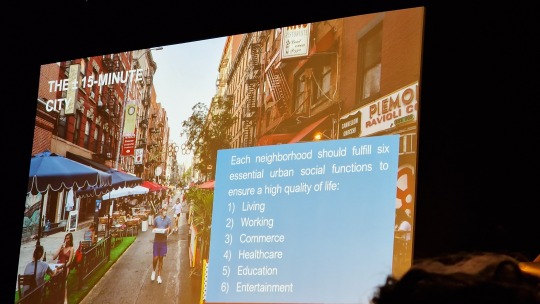
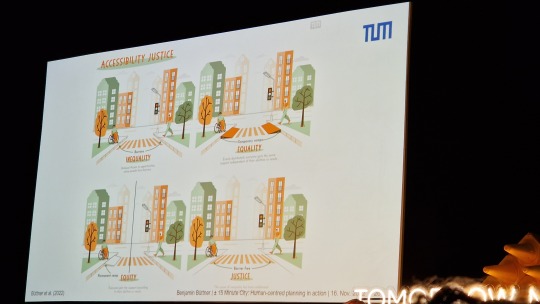



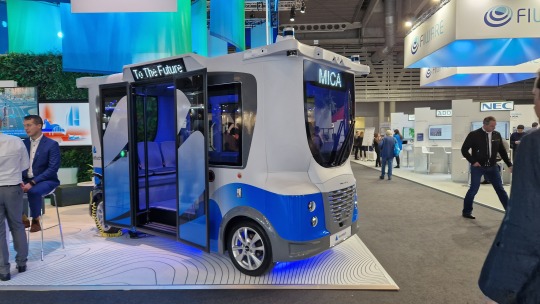


0 notes